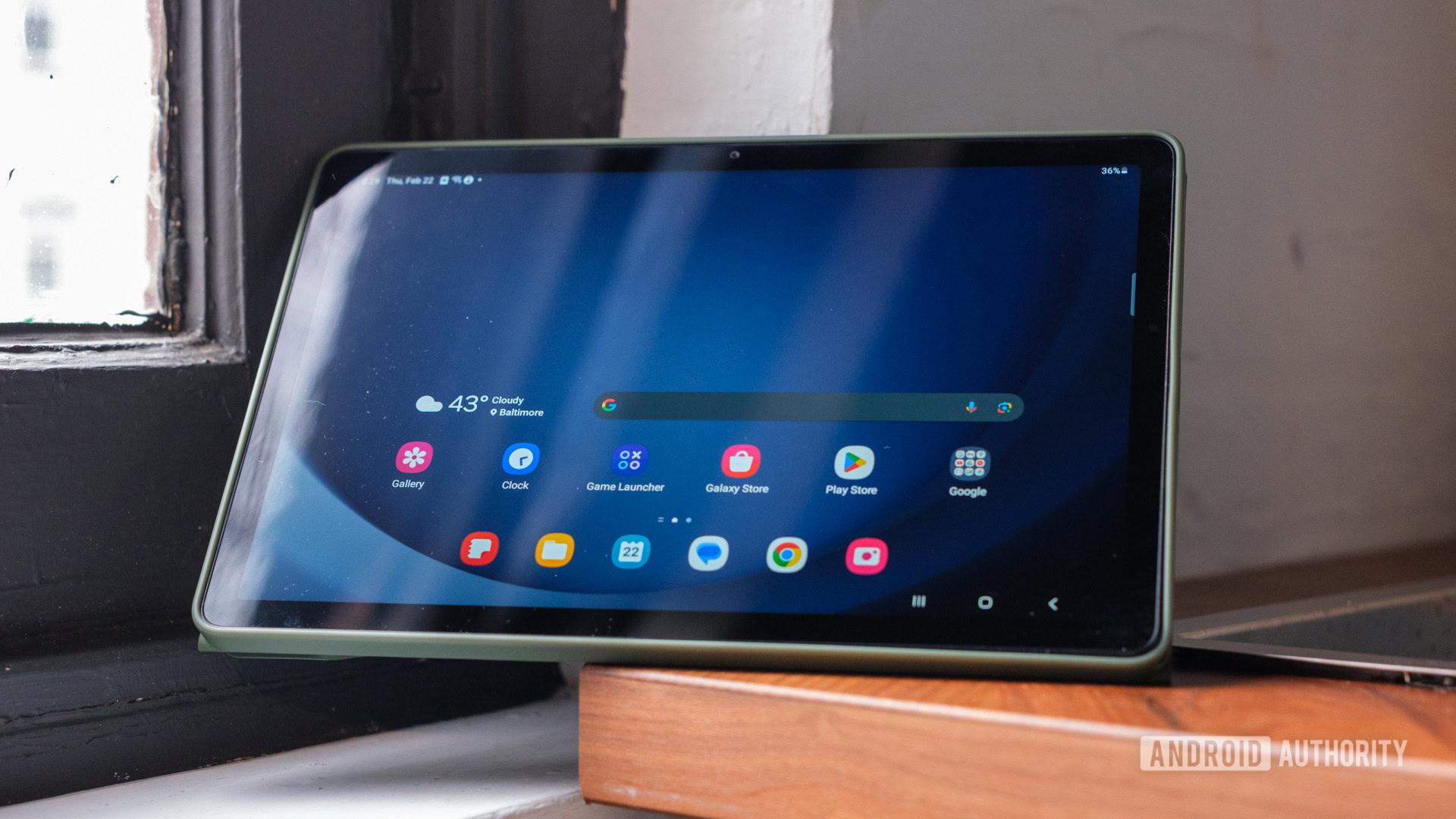Affiliate links on Android Authority may earn us a commission. Learn more.
honor 5X vs Nexus 5X vs OnePlus X

A prominent, and understandably well-received, trend last year was the availability of relatively inexpensive smartphones without the compromise in quality that used to be seen. The number of fantastic smartphones that you can get your hands on priced around or below $300 is certainly impressive, though some stand out more than others. Three of the most intriguing budget-friendly phones on market right now are arguably the honor 5X, OnePlus X, and the Nexus 5X.
The first two phones stand out primarily for pushing build quality farther than you’d expect given their low price tags. As for the Nexus 5X? It stands out both for its pricing, and for the fact that it is, well, a Nexus. All three of these handsets offer different experiences (as well as their own pros and cons), but in this in-depth look will we aim to give you a better idea of how these smartphones compare.
Design
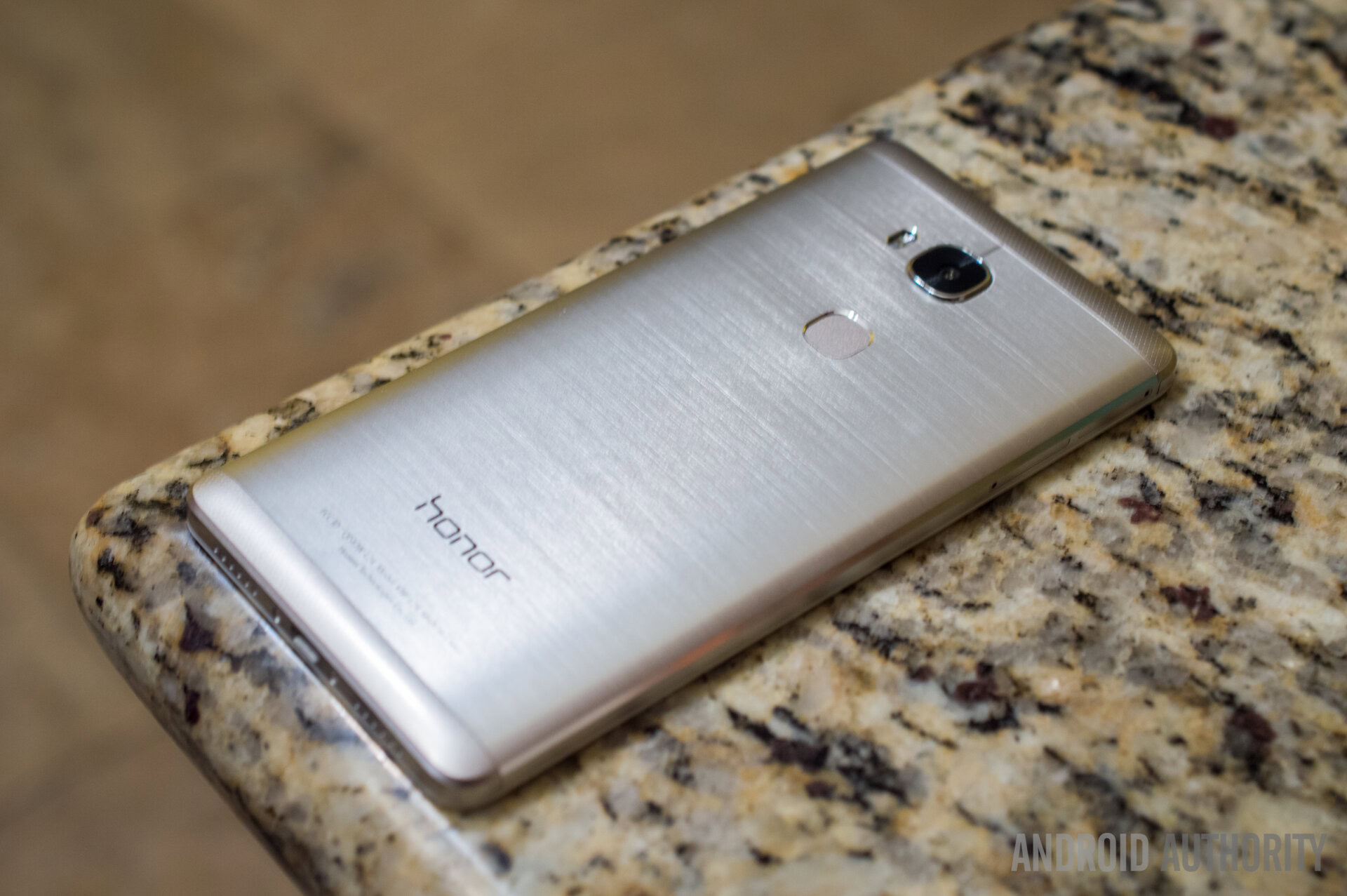
We start off with the honor 5X that was introduced recently during CES 2016, and while we know that the device is priced at $200, that’s certainly not the price point you’d expect when you first look at this phone. Featuring a metal unibody construction, you get a premium looking device that offers a solid feel in the hand, with the brushed hairline finish really adding to the overall aesthetic. The slightly curved back and flat sides makes for a phone that is comfortable to hold, and for a device that is made primarily of metal, it is surprisingly light, and not slippery either.
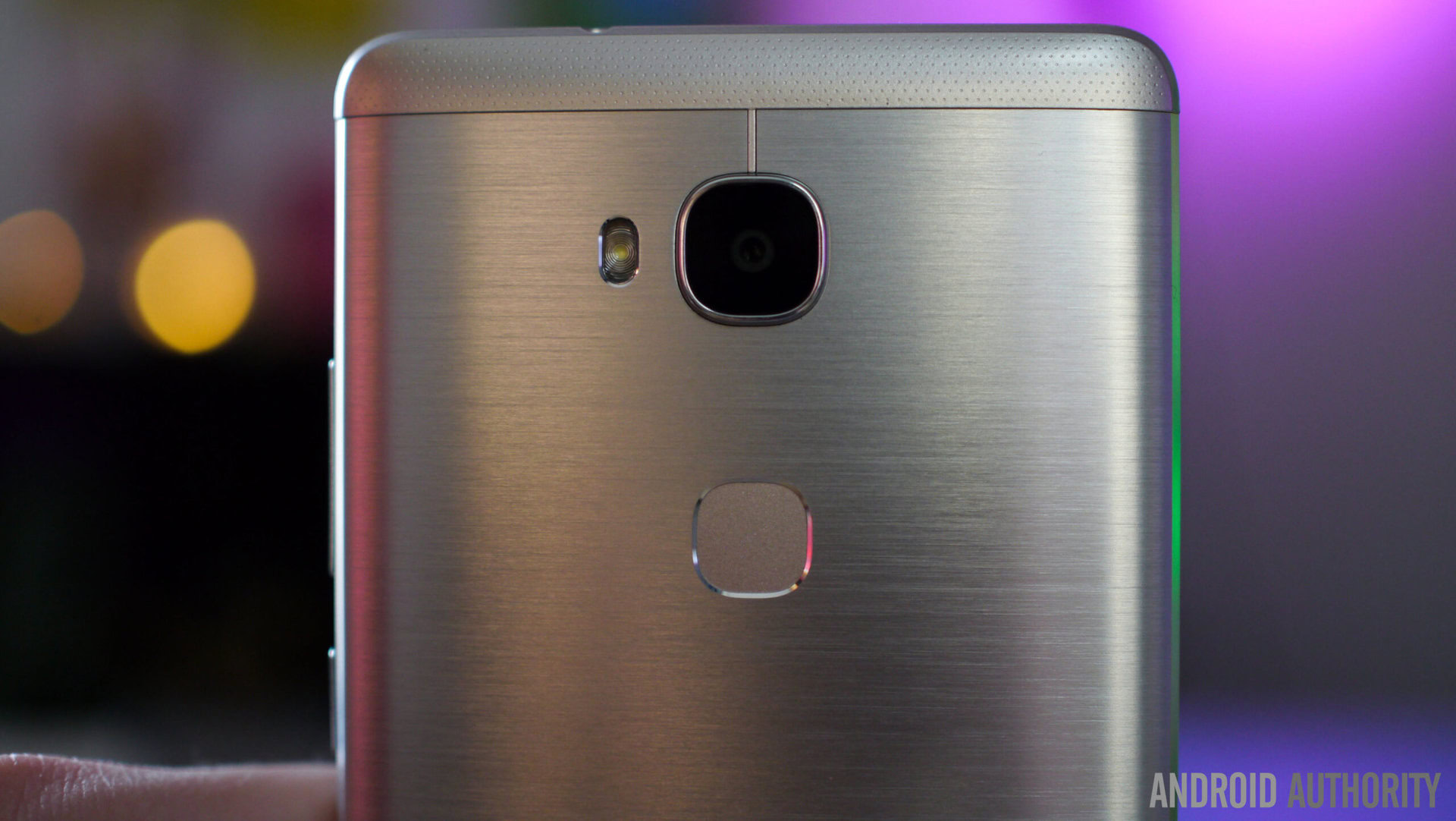
Another feature that isn’t usually expected from an affordable smartphone is a fingerprint scanner, but one is to be found with the honor 5X, which works surprisingly well. It may not be the fastest fingerprint reader HUAWEI has put on a smartphone, but it is fast and accurate enough to not cause any problems at all.
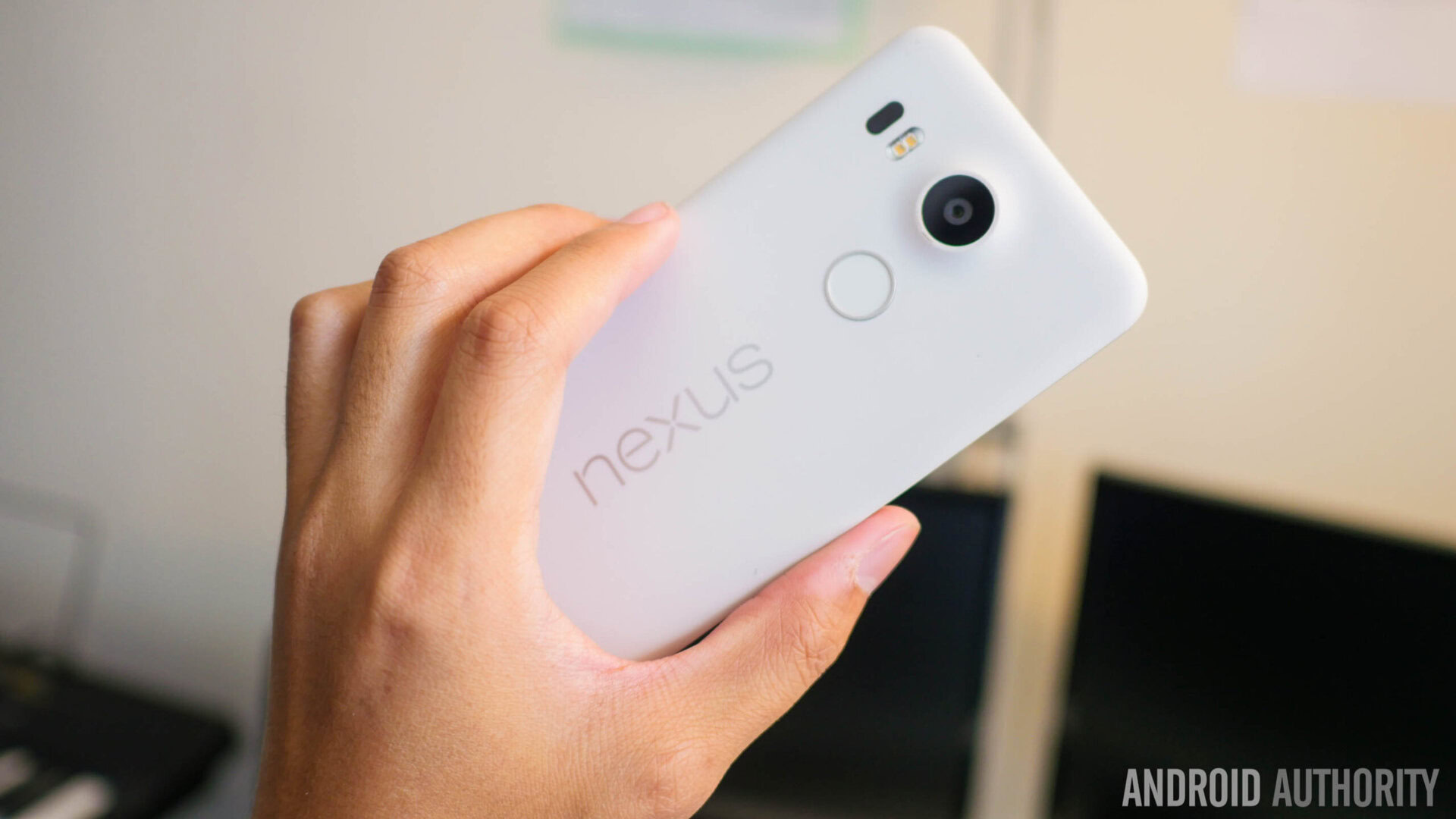
On the other hand, the Nexus 5X is a complete opposite in terms of build materials and the feel it offers in-hand. The Nexus 5X continues where its spiritual predecessor, the Nexus 5, left off, touting a minimalist design that is completely plastic-clad. The plastic build and smooth matte finish doesn’t compare favorably when pit against the phones that feature metal or glass, but the plastic body is actually quite sturdy. The matte finish allows for a very soft and nice feel, and given its overall size, the one-handed handling experience of the Nexus 5X is very comfortable.
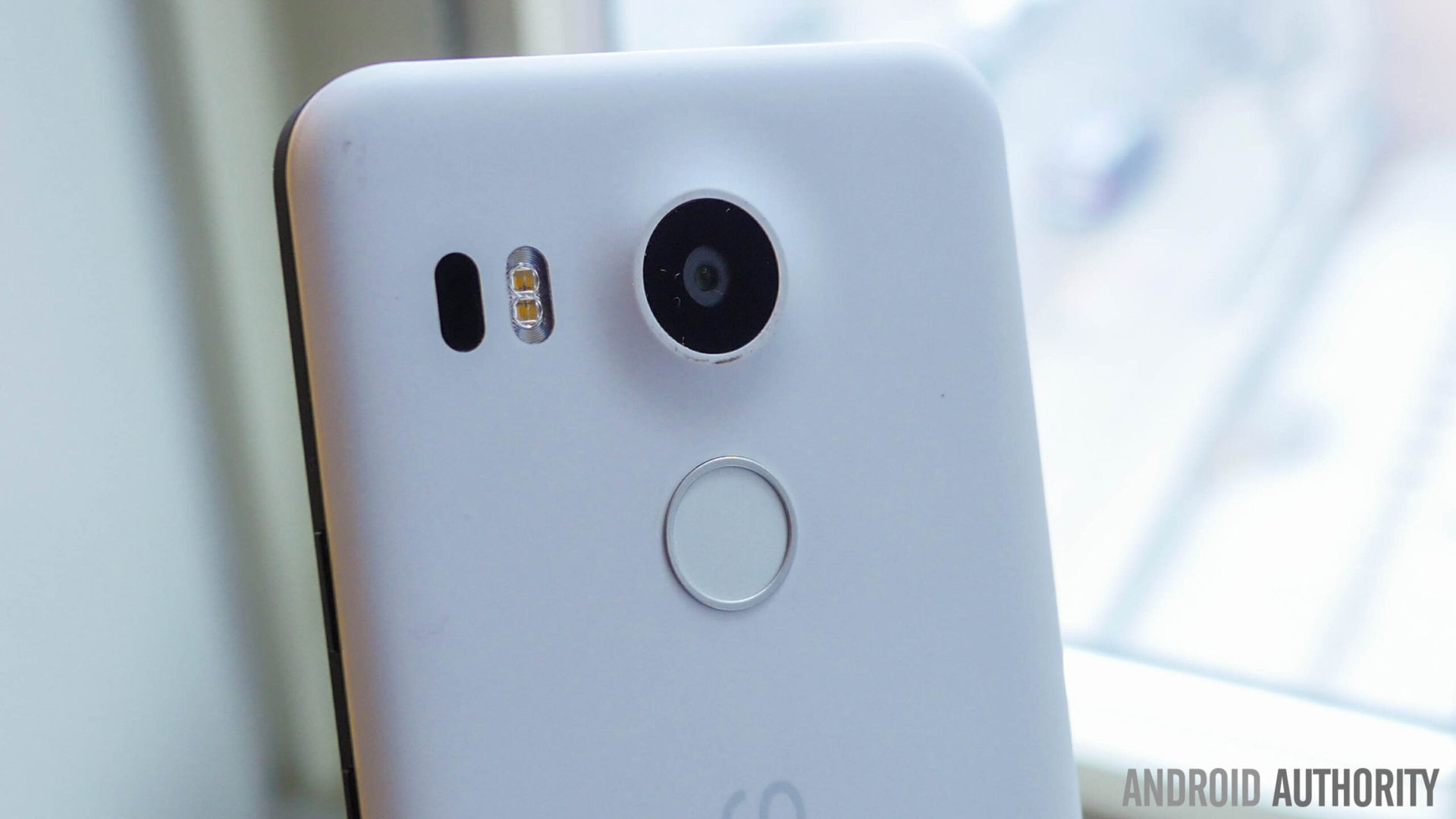
Just like the honor 5X, the Nexus 5X also comes with a fingerprint scanner on the back, and Google really did an amazing job with Nexus Imprint. The setup process requires just a few taps to register a fingerprint, and once you are up and running, the scanner is extremely fast and accurate. It is very reliable, and you can pretty much have your smartphone unlocked even before completely pulling it out of your pocket. You also get USB Type-C with the Nexus 5X, which is slowly and surely becoming the new standard, even if the other devices seen in this comparison continue to utilize the older microUSB standard.
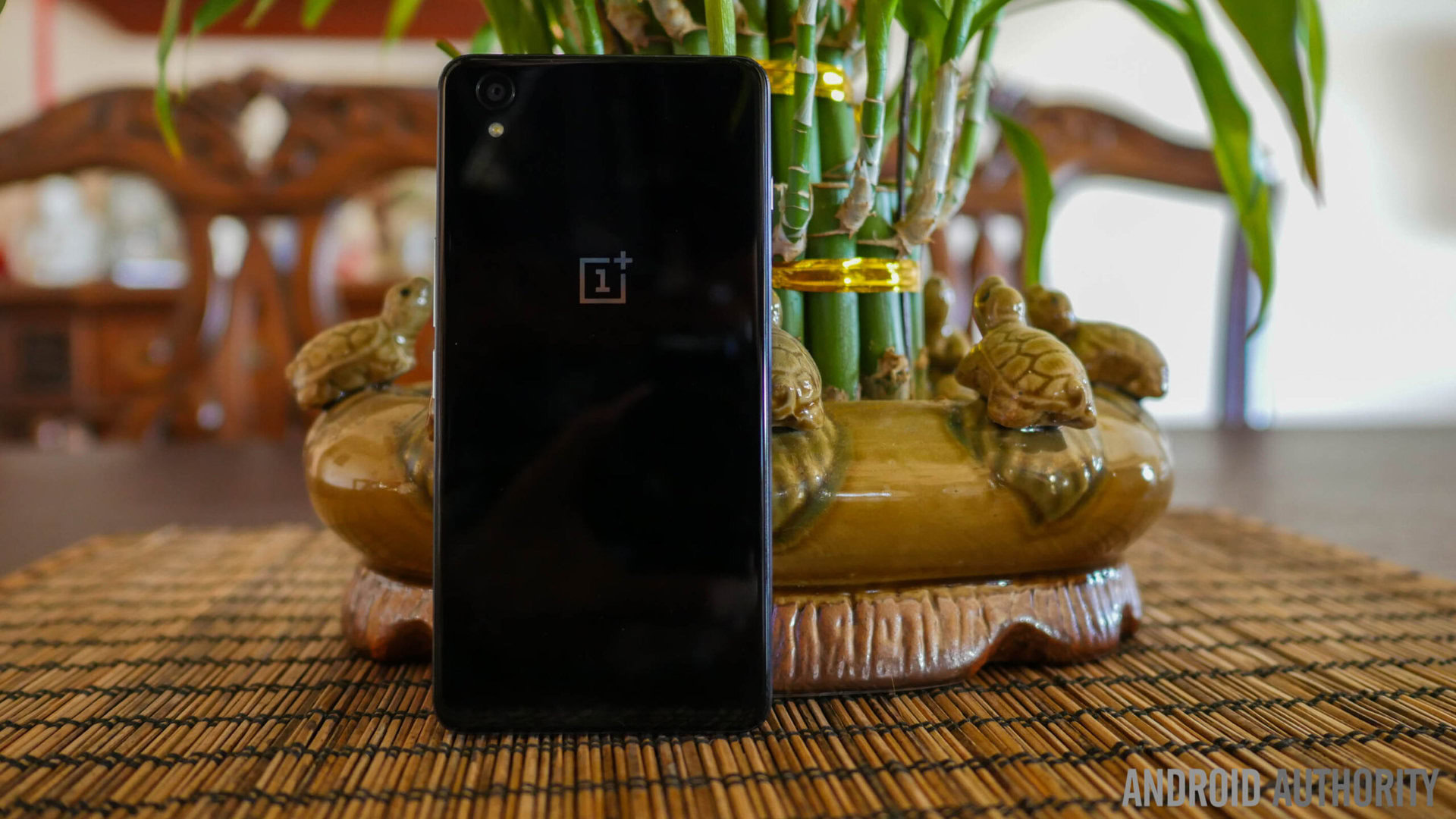
Finally, there is the OnePlus X, an even more affordable alternative to the already budget-friendly OnePlus 2. However, despite its low price tag, OnePlus has managed to offer a high quality experience with the OnePlus X. The device features a familiar sandwich design with glass on the front and back held together by a metal frame, and with it being smaller than the Nexus 5X, the handling experience is far more comfortable with one hand. The metal frame also features a series of micro cuts that allow for a better grip of the phone, and helps alleviate any concern with the glass construction resulting in a slippery phone. It has to be said that the glass is prone to fingerprints though, but it won’t be as noticeable with the white version of the phone.
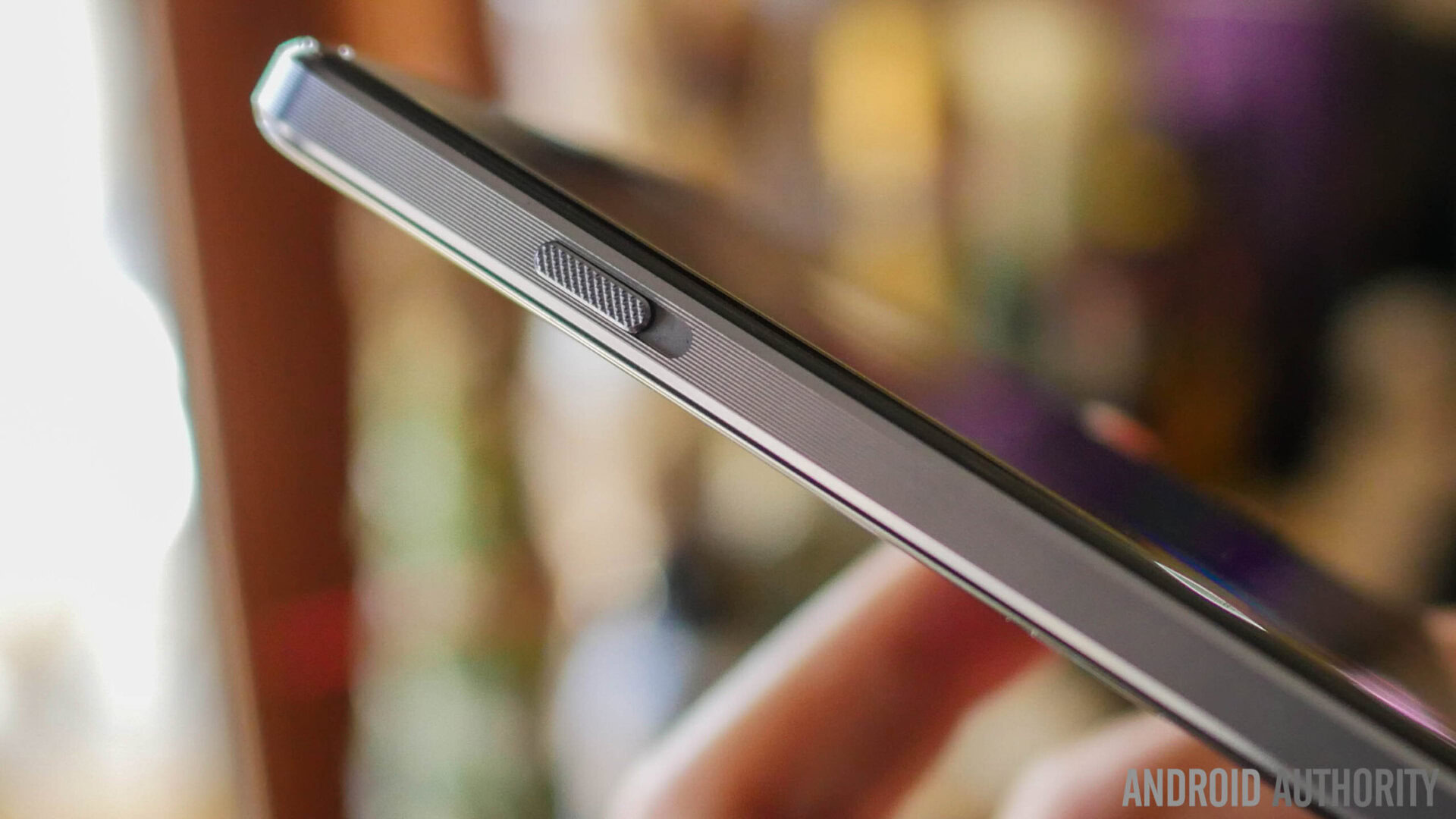
Unlike the other two devices in this comparison, there is no fingerprint scanner to be found here, but the OnePlus X does have at least one of its own unique additions with its Alert Slider. a feature that makes its way over from the OnePlus 2. It allows for a quick and simple way to easily toggle between the various notification priorities, and even though it isn’t a feature seen with other Android smartphones, it certainly should be, given how useful a feature it is.
Display

All three of the devices feature displays with 1080p resolutions, but that is all that is common between them, as differing screen sizes and underlying technologies translate into very different experiences for each of the phones.
The honor 5X is the largest of the group, boasting a 5.5-inch IPS LCD display, resulting in a pixel density of 401 ppi. If you like big screens, the honor 5X may be the way to go, and you get really nice and vibrant colors, very accurate looking whites, and good viewing angles. You’re not going to get very deep blacks, but it gets the job done in most aspects, and is a pretty enjoyable display for your multi-media experience.

The Nexus 5X comes with a 5.2-inch IPS LCD display, with a pixel density of 423 ppi. While both the Nexus 5X and honor 5X feature LCD screens, the display of the former unfortunately doesn’t offer colors that are quite as vibrant, with whites that are a little bit pink in comparison, along with a visibly lower overall brightness. It is still a decent looking panel, but as seen, it certainly isn’t the best 1080p screen out there.
Moving on to the OnePlus X, it comes with a 5-inch AMOLED display, resulting in a pixel density of 441 ppi. This display is my personal favorite of the lot, and as is expected from any AMOLED screen, you get vibrant and saturated colors that pop, and solid viewing angles, along with the deep inky blacks that you simply won’t find with an LCD display. In this media-consumption age, the 5-inch display may be too small for some, but for those who are looking for smaller devices that help with aspects like one-handed usability, the OnePlus X certainly fits the bill.
Performance and hardware

Qualcomm processors are the order of the day with all these devices, with the octa-core Snapdragon 615 processor powering the honor 5X, backed by the Adreno 405 GPU and 2 GB of RAM, while the Nexus 5X comes with the hexa-core Snapdragon 808 processor, backed by the Adreno 418 GPU and also 2 GB of RAM. Finally, under the hood of the OnePlus X is the older quad-core Snapdragon 801 processor, backed by the Adreno 330 GPU and 3 GB of RAM.
When it comes to performance, none of these devices are really going to blow you away in terms of raw power or benchmark test results, but they are not really meant to, given the fact that these are budget devices. As far as handling everyday tasks go, all these devices perform admirably well though, and while the Snapdragon 801 is the oldest of the lot, it still remains a very capable processor. You will notice some slowdown if you try to push these devices too hard, but the phones handle gaming pretty well, including those that are more graphically intensive.
Despite packing very different Qualcomm chips, for the most part, I haven’t noticed much difference between these three smartphones as far as real world performance is concerned.
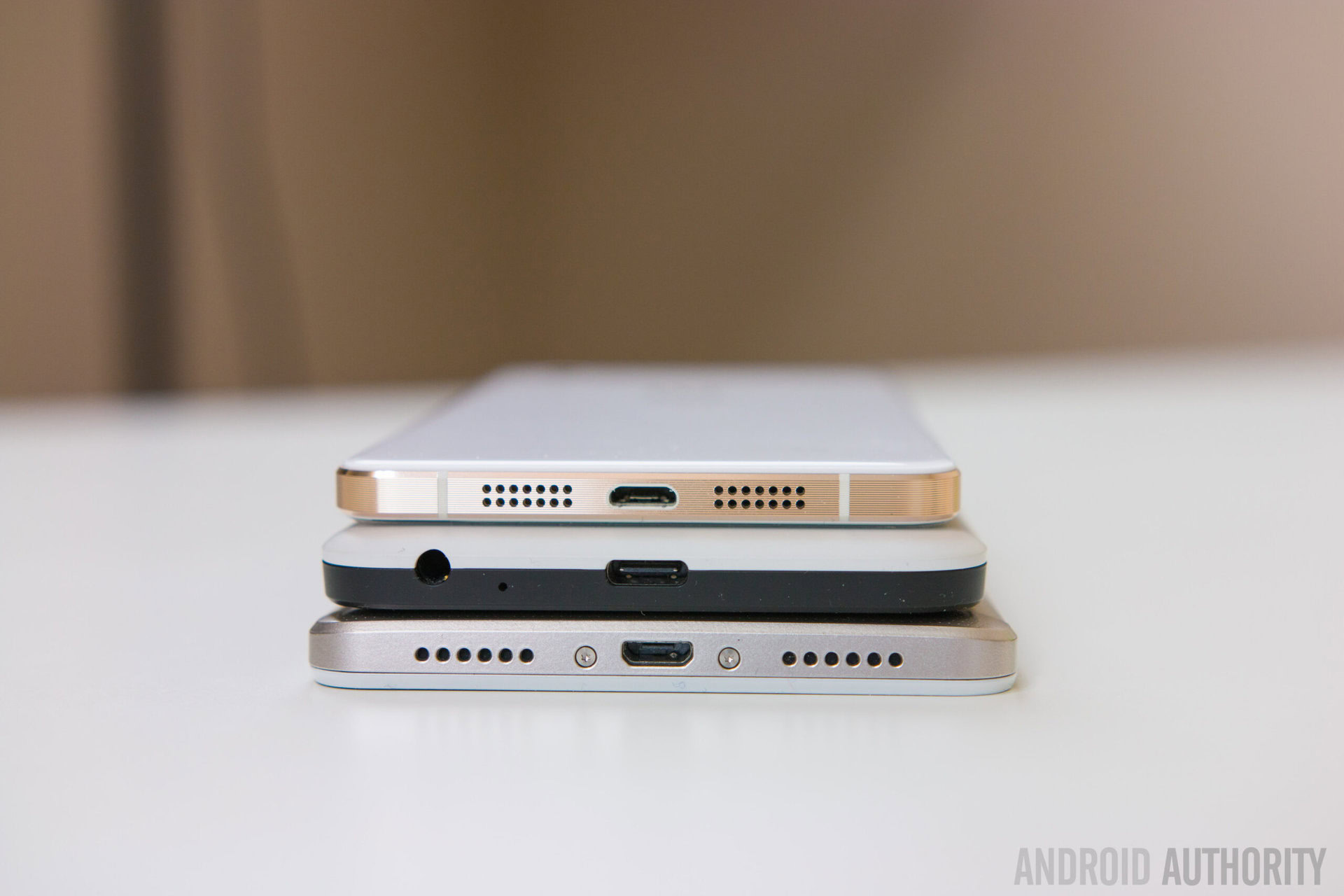
If NFC is a part of your requirements from a smartphone, the Nexus 5X is the only choice here, but if storage is a more prominent concern, the honor 5X and the OnePlus X are the way to go, with the availability of expandable storage. Of course, the lack of a microSD card slot with the Nexus 5X isn’t particularly surprising, as that has been the case with Nexus smartphones for several years now.
One really important aspect that needs pointing out is that the honor 5X and OnePlus X lack full LTE support in the US, more so in the case of the OnePlus X, which is missing support for both band 12 and band 17 on a hardware level. This doesn’t mean that you won’t get access to high speed data, but it isn’t going to be as reliable as you may like, and in some areas you may be stuck with HSPA+ speeds.
As far as battery life goes, you can’t expect anything more than a full day’s worth of battery out of any of these devices, but the way they go about achieving that are all very different.
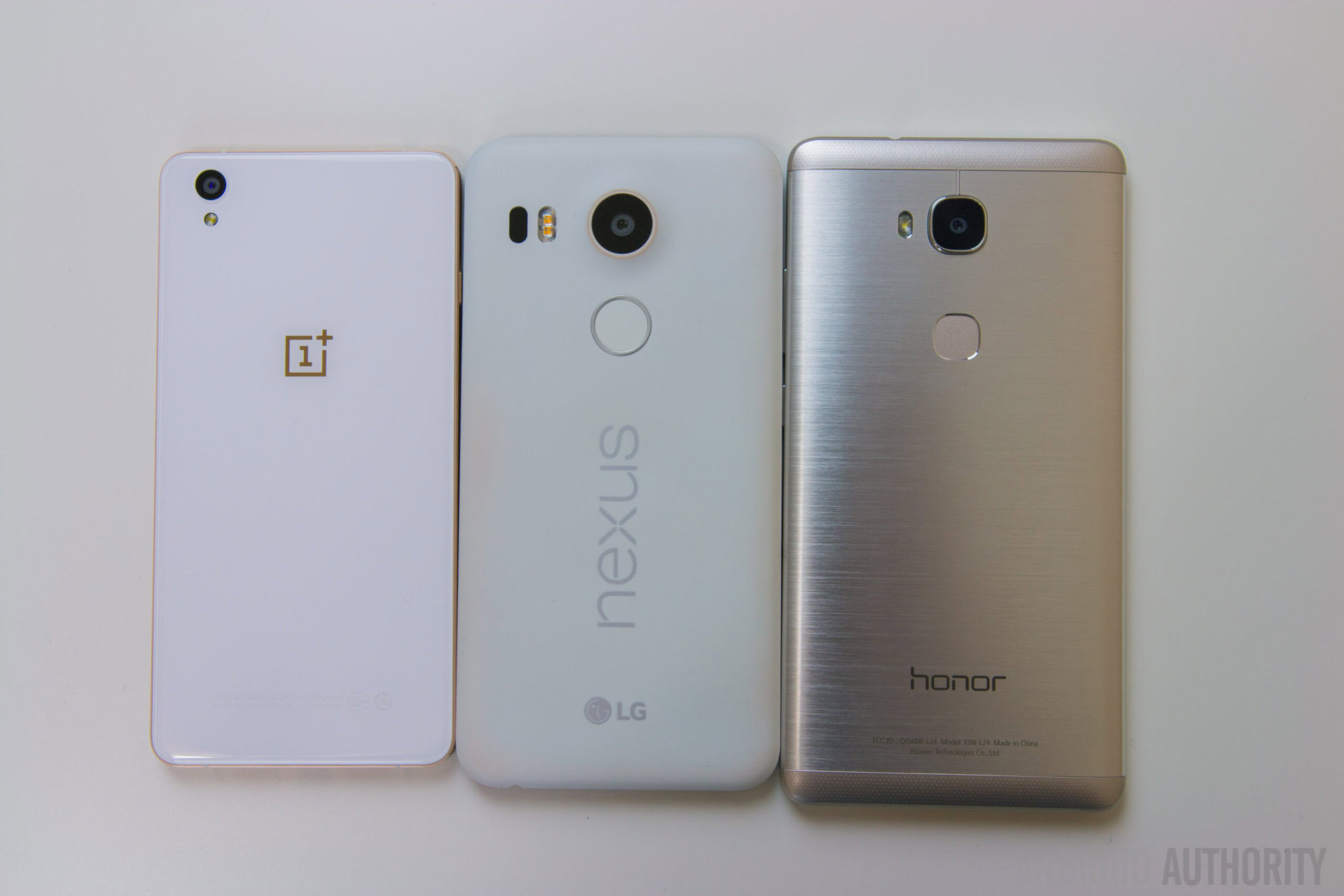
The honor 5X relies on a large 3,000 mAh battery to give itself enough juice to get you through the day. There are, however, HUAWEI’s standard power saving features built-in that adjust CPU and network usage for longer battery life, including an ultra power saving mode that disables most things, except for basic functions like calls and messaging. This, of course, can be really useful in those times when you just can’t get to a charger and you need to stretch out those last few percentages for as long as possible.
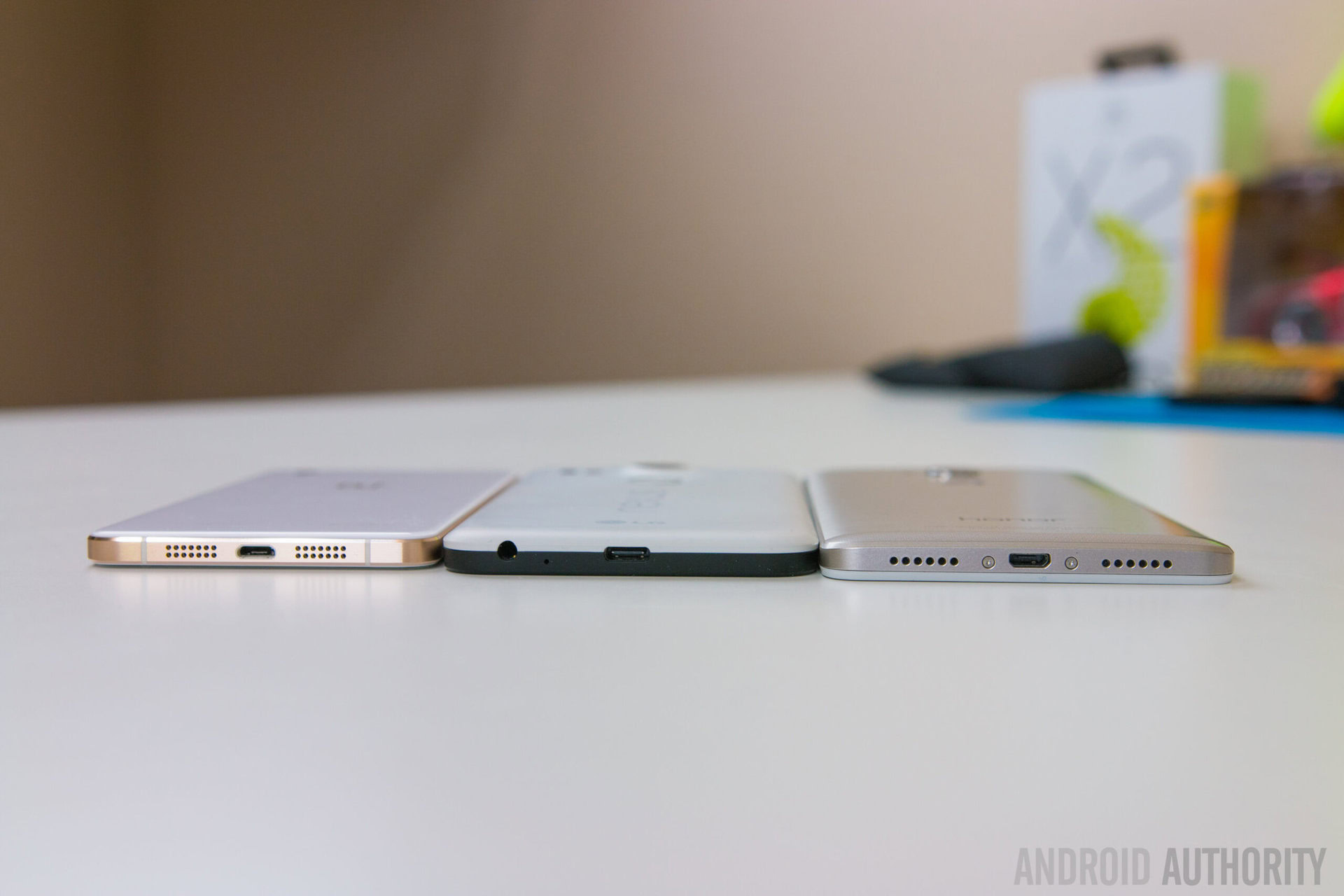
With the Nexus 5X, you’re getting a slightly smaller 2,700 mAh battery, and battery life during normal usage is pretty good, but where the 5X really shines is in standby. This is due to Doze, one of the newest features of Android introduced with Android 6.0 Marshmallow, which puts the phone in a deep sleep and limits unnecessary app activity anytime the phone is idle for long time. It makes a huge difference, and you can really see how little power is being consumed when looking at the battery life statistics. Something else that the Nexus 5X has is fast charging capabilities, which isn’t available with the honor 5X or the OnePlus X.
The OnePlus X has the smallest battery out of the bunch, with a capacity of 2,525 mAh hours, but the smaller 5-inch AMOLED panel is much more battery life-friendly compared to an LCD screen, and the OnePlus X comes with a system wide dark mode that is enabled by default, to help you get the most out of your battery life.
Camera
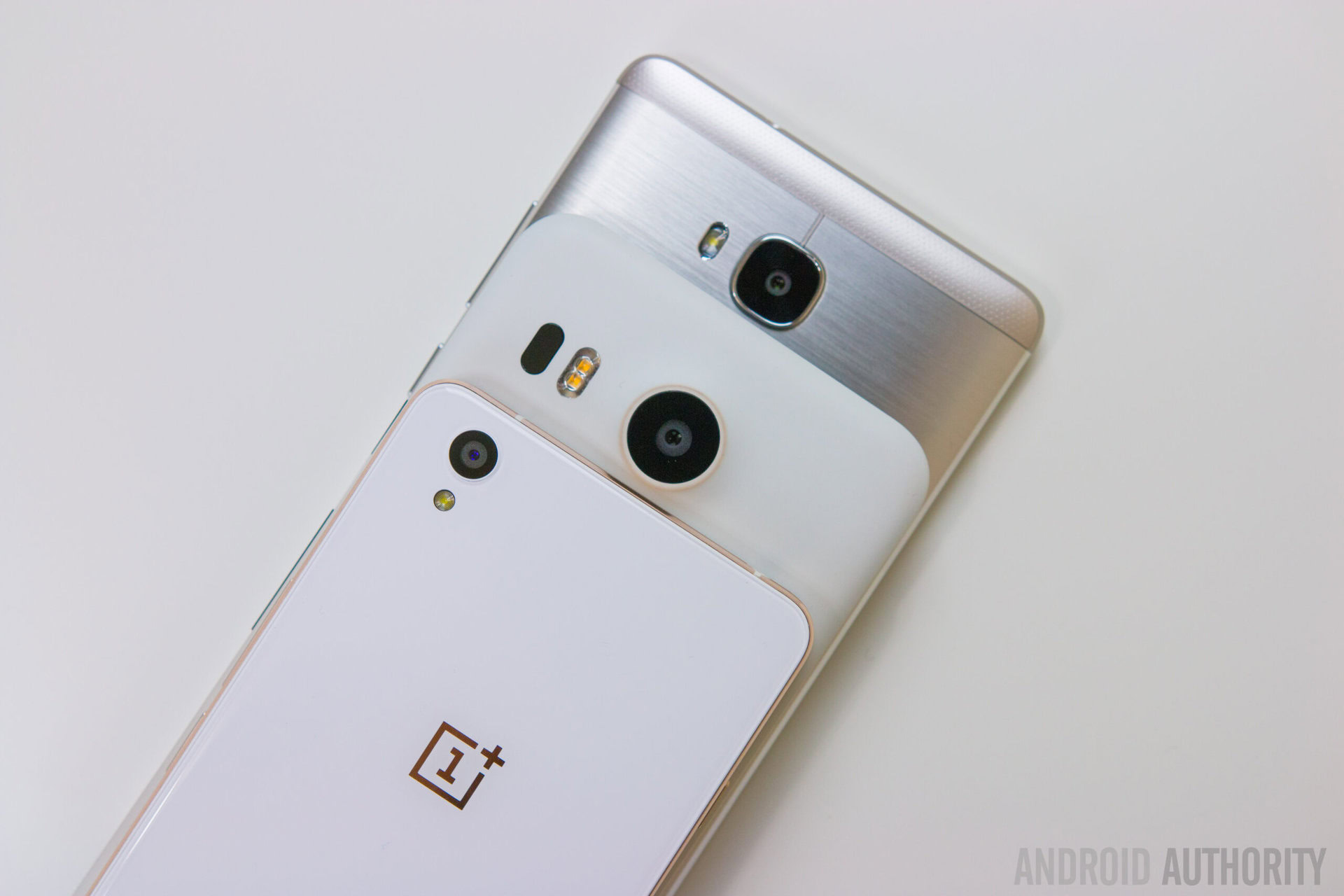
On paper, the cameras of all these smartphones seem pretty close to each other, purely in terms of numbers, with the honor 5X and the OnePlus X featuring 13 MP rear cameras, while the Nexus 5X comes with a 12 MP rear shooter. However, we all know that megapixels aren’t everything, and the actual quality of the sensor, pixel size, and image processing are some of the aspects that make a big difference.
Nexus 5X camera samples
When comparing the quality of the images side by side, there is really not much of a competition here. The Nexus 5X easily overshadows the honor 5X and the OnePlus X. Of course, this may not be much a surprise, considering the fact that the Nexus 5X features the exact same camera setup as the flagship Nexus 6P. In normal to good lighting conditions, the Nexus 5X consistently produces sharper images, with better color accuracy and dynamic range.
OnePlus X camera samples
The OnePlus X takes hold of the second spot, with decent color reproduction and good amount of detail seen in images. However, dynamic range is still lacking, even if it isn’t nearly as bad as seen with the honor 5X, that comes a distant third. What you get is a lot of overexposed highlights and crushed shadows, with many of the images taken with the honor 5X camera having a noticeably warm cast.
honor 5X camera samples
The story remains largely the same when taking pictures in low light conditions. The Nexus 5X does a really good job in these situations, making for images that are well detailed and with very little noise, and highlights that aren’t overexposed, as is the case with the honor 5X and the OnePlus X. The honor 5X is also quite slow in poorly lit situations, and images can come out slightly blurry if you don’t maintain a perfectly steady hand. The camera does try to add some sharpening in post processing to bring out more detail, but with photos being muddy and soft as is, it doesn’t make much of a difference.
Software

These are all Android smartphones, but as is the case with most other Android smartphones out there, the software experience will vary, sometimes greatly, depending on which device you pick.
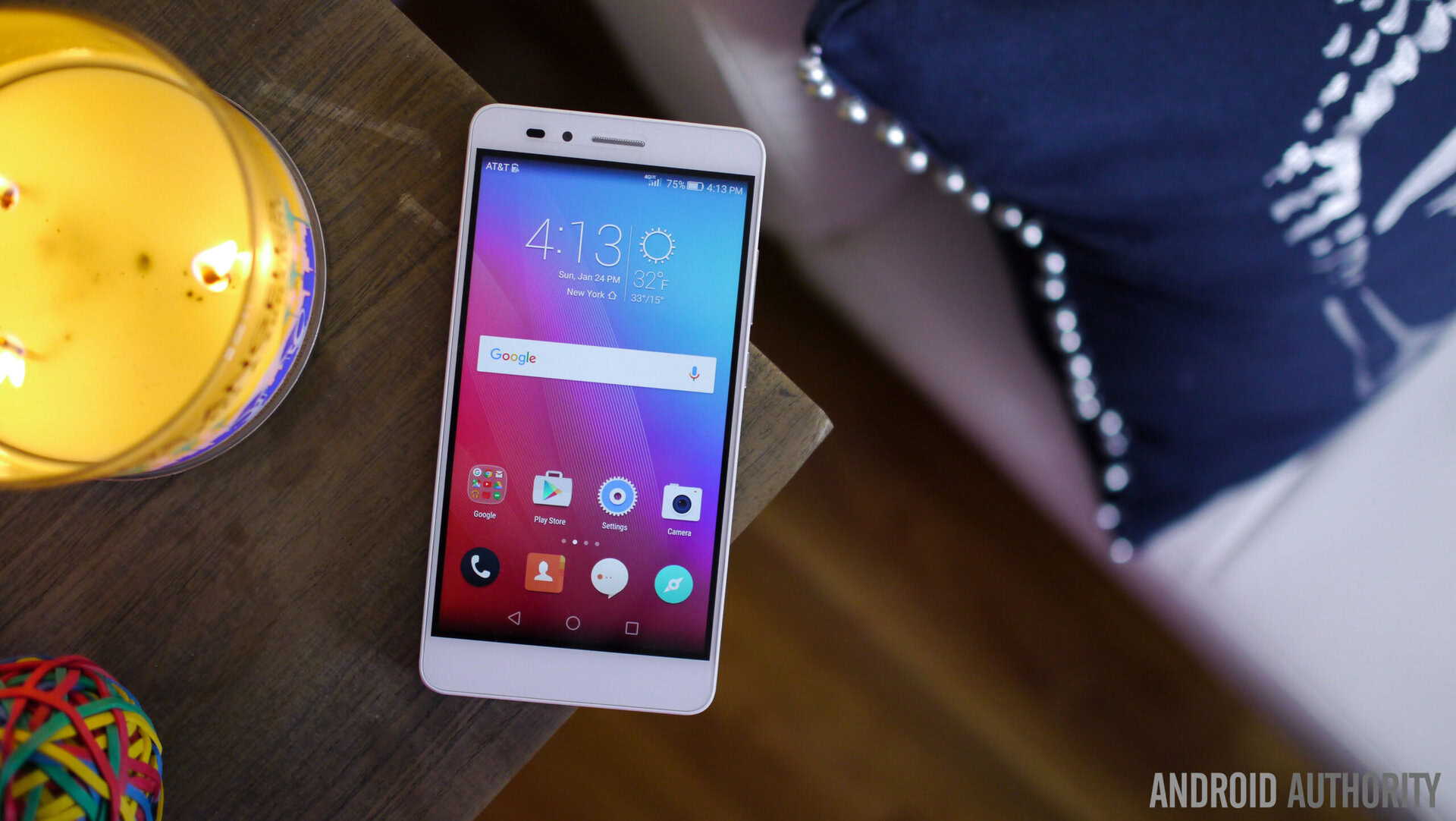
The honor 5X is running Android 5.1.1 Lollipop, with HUAWEI’s Emotion UI on top, and if you find the experience similar to what is found with iOS, you wouldn’t be entirely wrong. Like iOS, the interface is filled with a lot of very colorful icons, wallpapers, and transparency effects, along with the lack of an app drawer, which can take some getting used to, and leaves users dependent on folders to stay organized. Emotion UI does bring a few interesting features to the software package, but for the most part, it feels like it is interfering with the Android experience, instead of adding to it.

If you are looking for the purest Android experience out there, a Nexus smartphone has always been the way to go, and that certainly remains the case with the Nexus 5X. With the Nexus 5X, not only are you getting the latest features introduced with Android 6.0 Marshmallow, such as Doze, Google Now on Tap, and user defined permissions, but you will also be first in line for future software updates. Stock Android is generally faster and more responsive when compared to its skinned counterparts, so if you are looking for a smooth, streamlined, and clean user experience, stock Android is going to be your best bet.
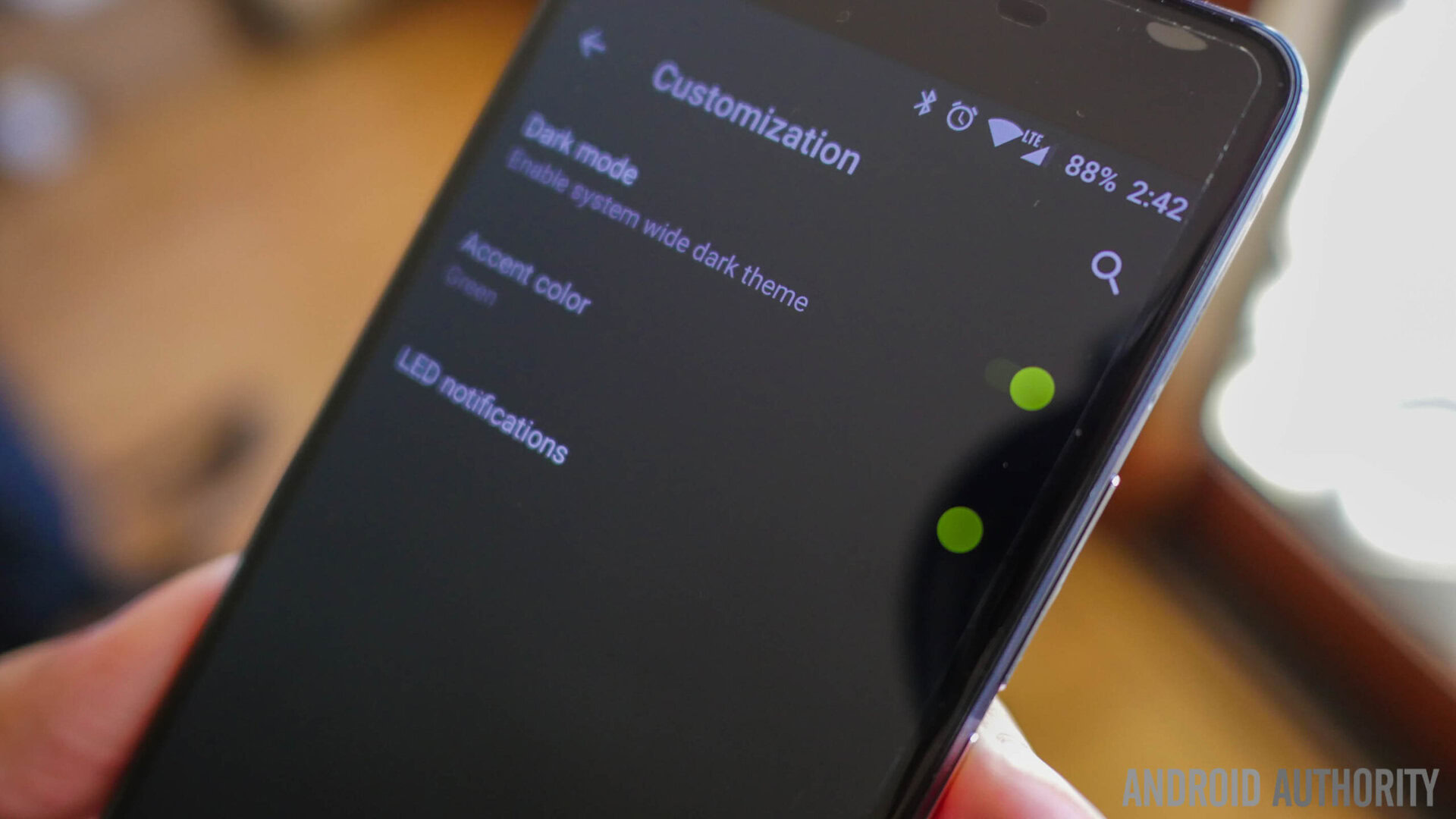
If you are a fan of the stock Android look, but are interested more in terms of customization and features, that is exactly what you get with the OnePlus X, with it running Oxygen OS, based on Android 5.1.1 Lollipop. Oxygen OS comes with a lot of interesting and useful features baked in, such as the system-wide dark mode and various gesture controls, like double tap to wake, drawing an O to launch the camera, and so forth. You also get custom app permissions here as a part of Oxygen OS, despite it being based on Lollipop.
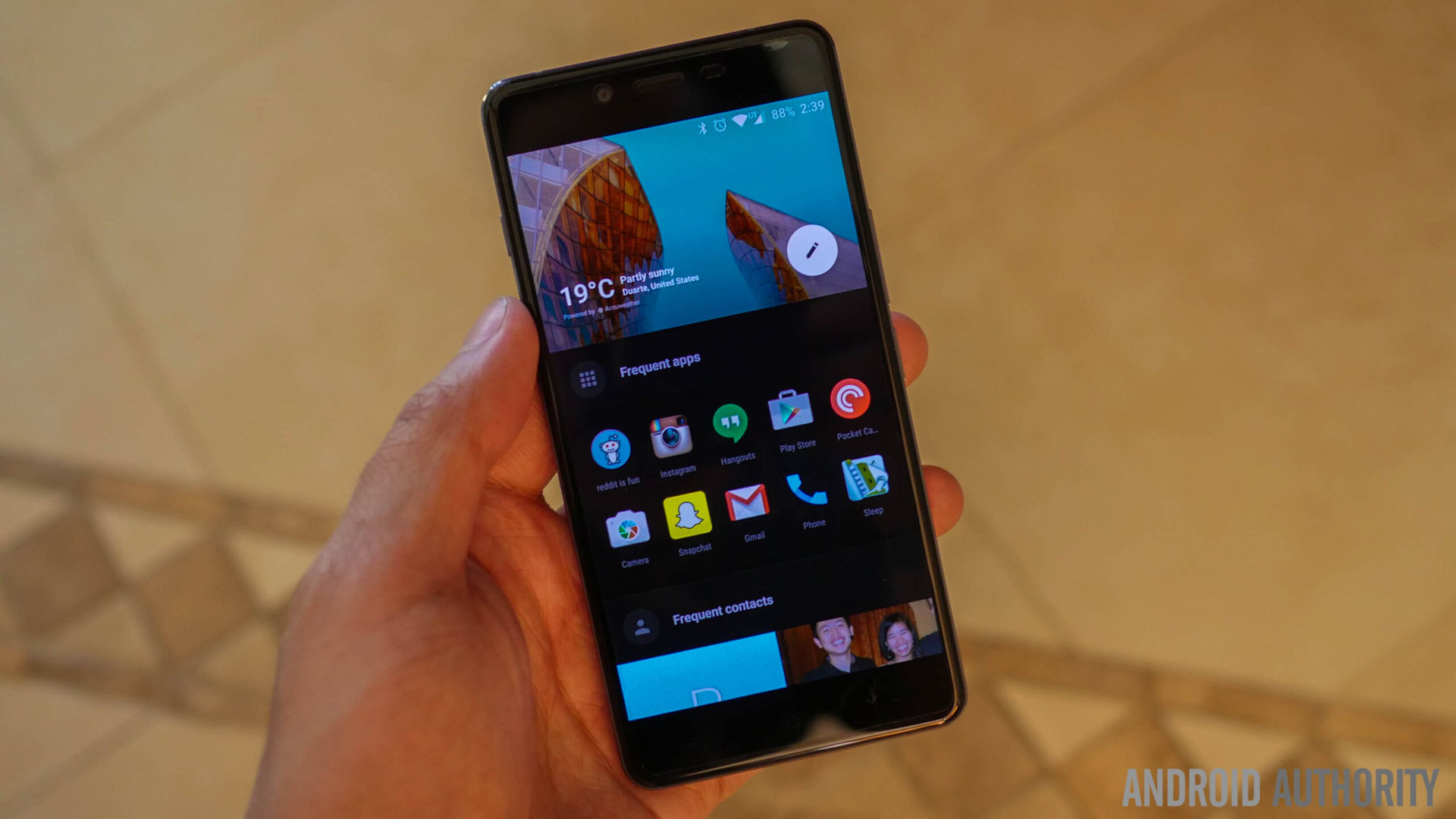
One of the biggest features of Oxygen OS is called Shelf, a pane that lives to the left of your main home screen, and stores your frequently used apps, favorite contacts, and any app widgets of your choice, which can make a big difference in keeping things organized. The biggest downside here is the fact that there is a lot of bloatware to deal with, including anything from speed boosters to junk file cleaners, along with a plethora of other apps that produce notifications that are often difficult to swipe away.
Specs comparison
| HONOR 5X | Nexus 5X | OnePlus X | |
|---|---|---|---|
Display | HONOR 5X 5.5-inch IPS LCD display 1080p resolution, 401 ppi | Nexus 5X 5.2-inch IPS LCD display 1080p resolution, 423 ppi | OnePlus X 5-inch AMOLED display 1080p resolution, 441 ppi |
Processor | HONOR 5X 1.5 GHz octa-core Qualcomm Snapdragon 615 Adreno 405 GPU | Nexus 5X 1.82 GHz hexa-core Qualcomm Snapdragon 808 Adreno 418 GPU | OnePlus X 2.3 GHz quad-core Qualcomm Snapdragon 801 Adreno 330 GPU |
RAM | HONOR 5X 2 GB | Nexus 5X 2 GB | OnePlus X 3 GB |
Storage | HONOR 5X 16 GB, expandable via microSD card up to 128 GB | Nexus 5X 16 GB, no expansion | OnePlus X 16 GB, expandable via microSD card up to 128 GB |
Camera | HONOR 5X 13 MP rear camera 5 MP front-facing camera | Nexus 5X 12 MP rear camera 5 MP front-facing camera | OnePlus X 13 MP rear camera 8 MP front-facing camera |
Battery | HONOR 5X 3,000 mAh | Nexus 5X 2,700 mAh | OnePlus X 2,525 mAh |
Software | HONOR 5X Android 5.1.1 Lollipop | Nexus 5X Android 6.0 Marshmallow | OnePlus X Android 5.1.1 Lollipop |
Dimensions | HONOR 5X 151.3 x 76.3 x 8.2 mm 158 grams | Nexus 5X 147 x 72.6 x 7.9 mm 136 grams | OnePlus X 140 x 69 x 6.9 mm 138 grams |
Gallery
Final thoughts
So there you have it for this in-depth look at the honor 5X vs Nexus 5X vs OnePlus X! When it comes to making a choice between these, the important question is with regards to what is important for you from your smartphone experience. The honor 5X offers a solid metal build quality and a fast and accurate fingerprint scanner, along with expandable storage, while the Nexus 5X brings to the table NFC, a fantastic camera, a stock software experience, and a very reliable fingerprint reader as well. Finally, the OnePlus X also features a great build quality and a software experience that overshadows stock Android in certain aspects.
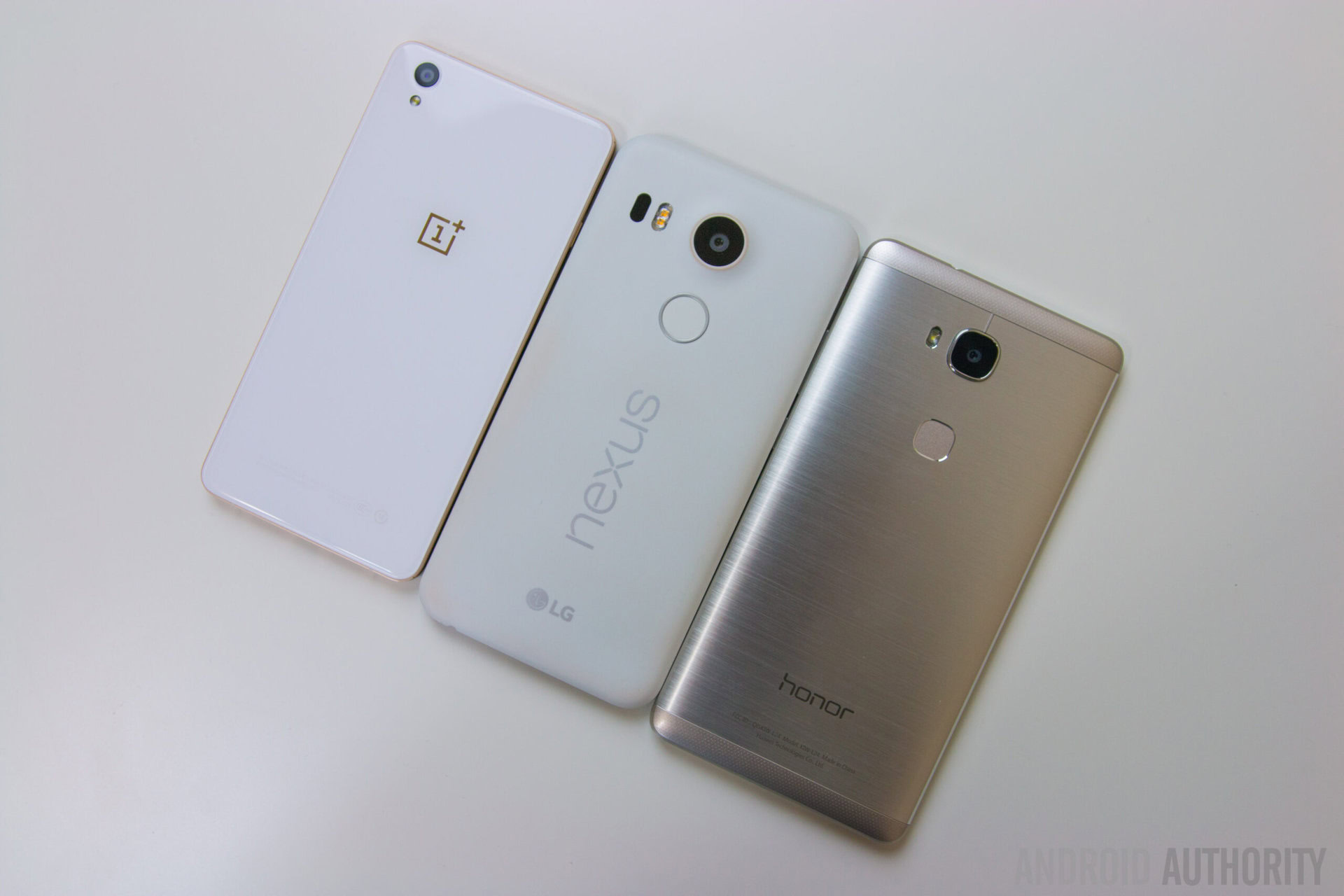
With sub-$300 price points across the board, it would be unfair to expect perfection from this lineup of devices, but in most cases, any shortcomings won’t be completely off putting. For those looking to save some money, it’s also worth noting that the honor 5X is the most affordable at $200, with the OnePlus X next in line at $250. Finally, we have the Nexus 5X, priced at $299.
